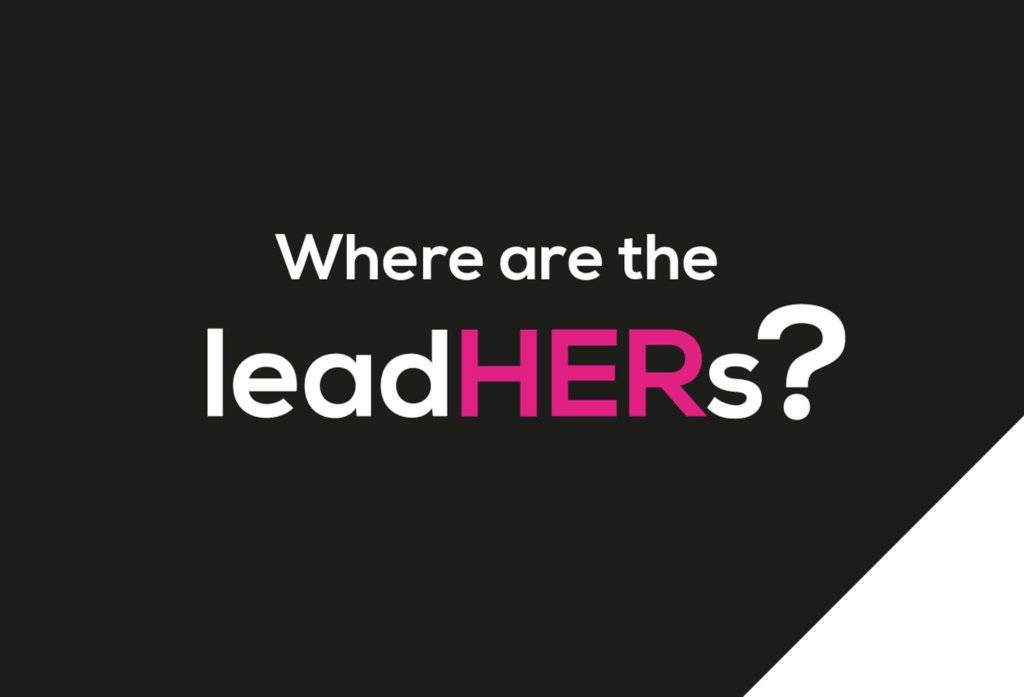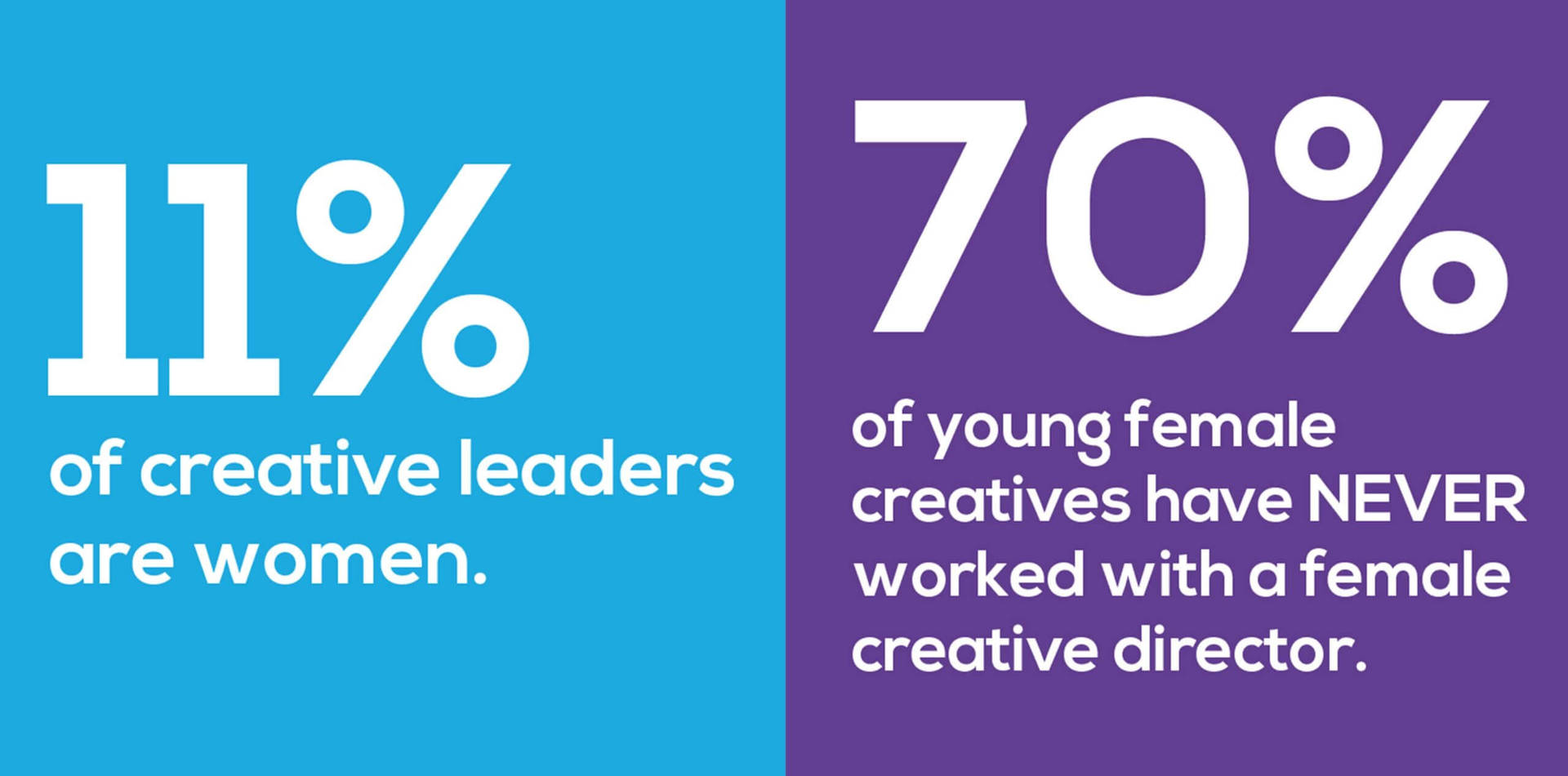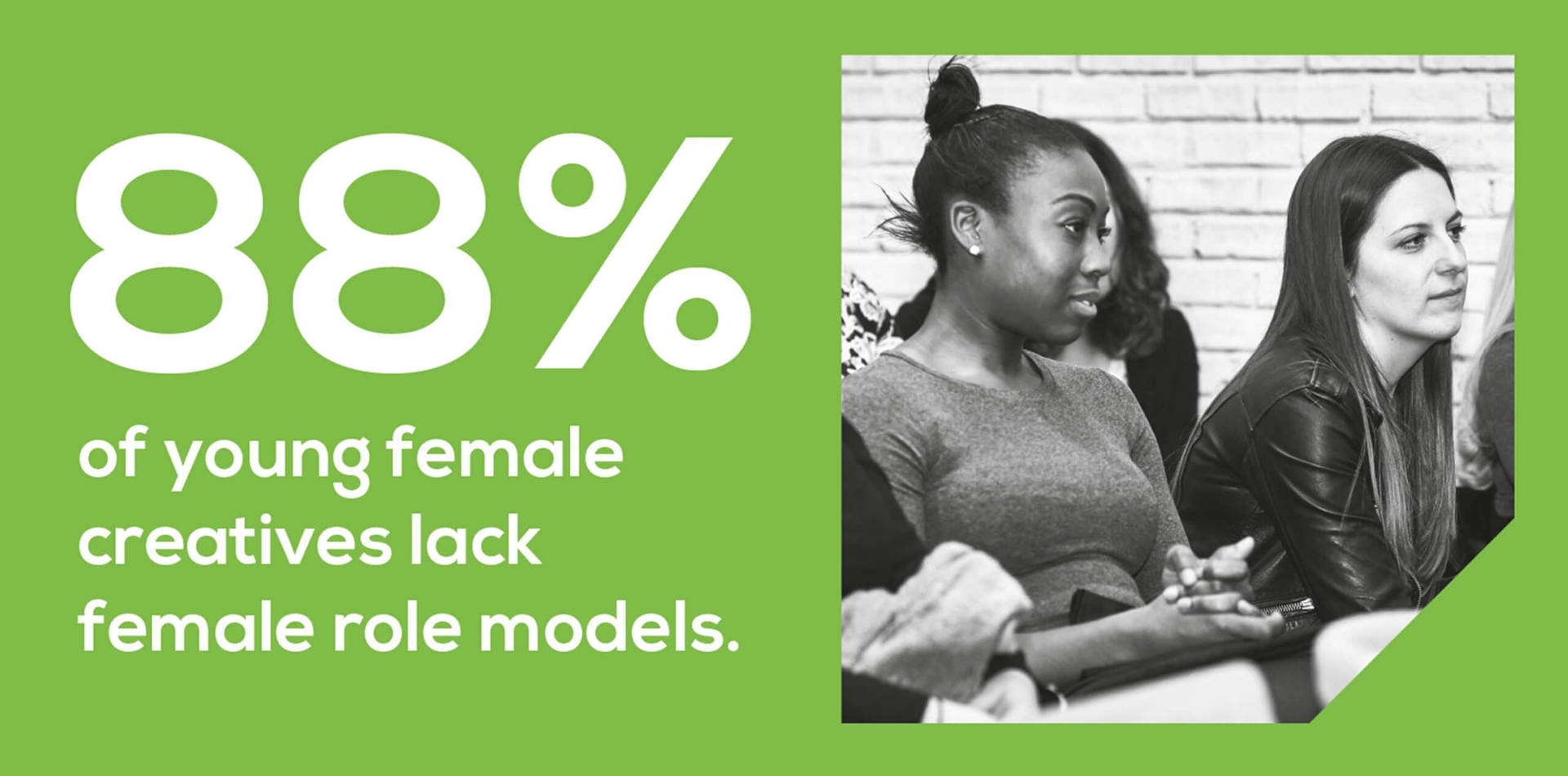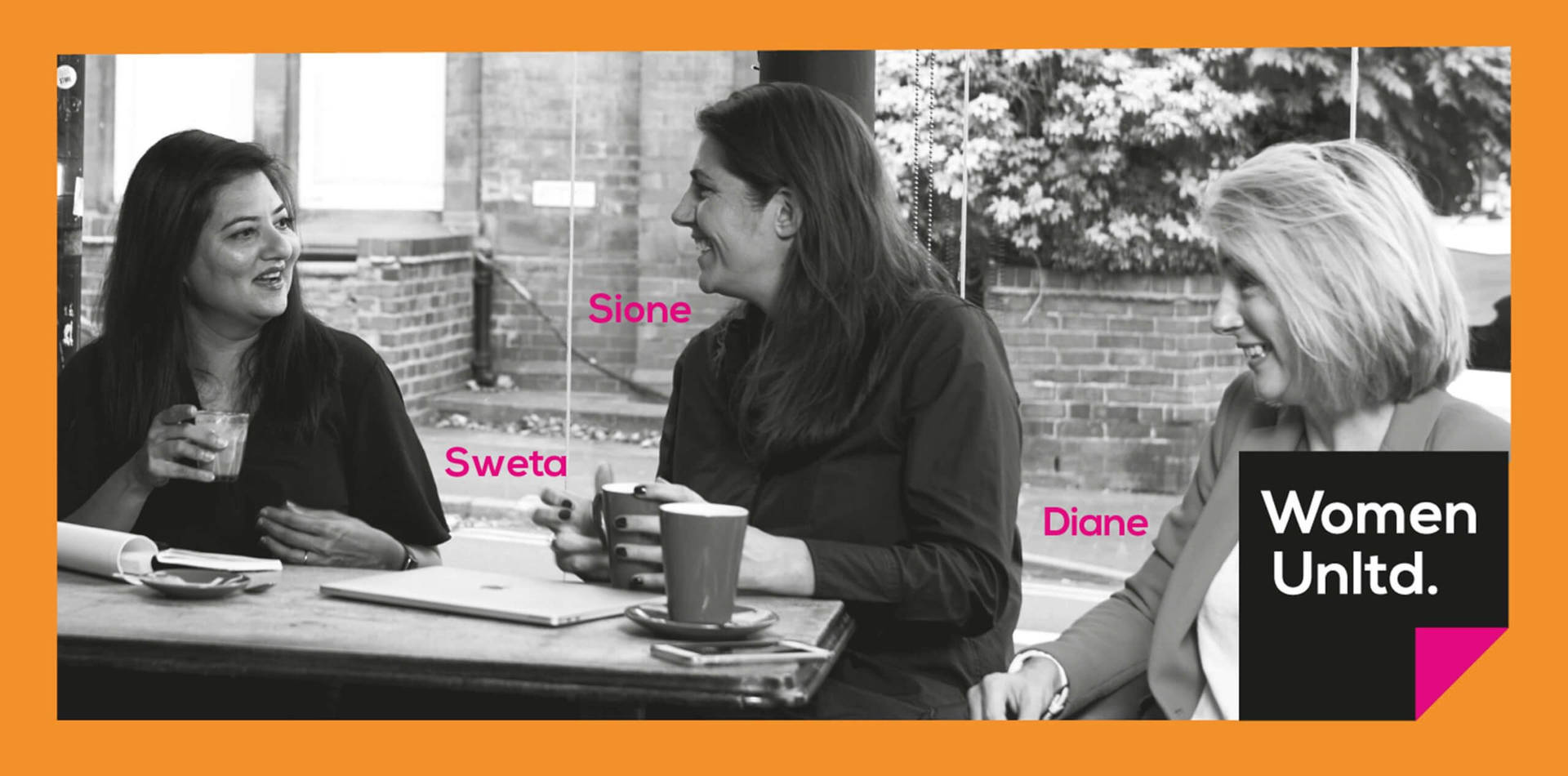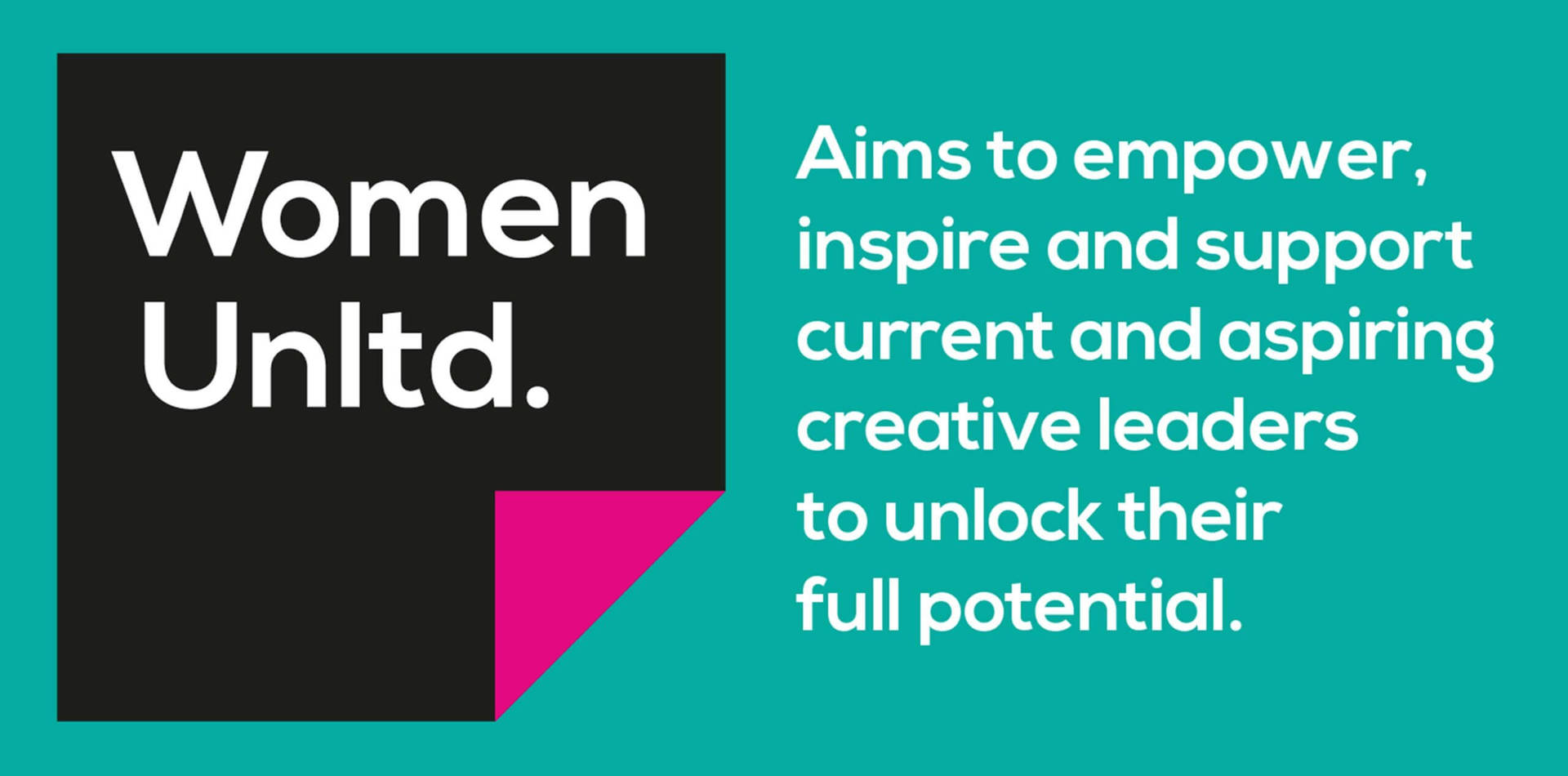Where are the LeadHERs?
While the needle is moving in the right direction, the lack of women at the top of the creative tree is still a huge problem for the creative industries. It’s only too obvious that change is slow and equality in the treatment of men and women in the courts, at work and in the media as the JWT sex discrimination case shows, is still far away.
There is a lot of talk about equality and diversity and inclusion in the industry, but unfortunately not too much action. Fact is that still today most Creative Directors are men (97%), only 0.1% of ad agencies are founded by women. According to Fast Company and reported by AdAge, nearly 50% of women dream of opening their own businesses, but only 12% think it’s a realistic goal. And they would be right as only 2% of venture capital investment goes to female founders.
According to the Design Council, representation in the UK’s design workforce is not much better with 78% of roles being occupied by men, despite women making up 63% of all students studying creative arts and design courses at university. It should therefore be no surprise then that 88% of young female creatives say they lack female role models and 70% have never worked with a female creative director or executive creative director.
In a world where women make up to 85% of all purchasing decisions and 60% of the social media sharing, it is complete madness and business insanity to not have more women in the driving seat creatively.
We – the creative industry – all know this, so why is change so slow?
Experiences early on in female creatives careers can be discouraging and knock confidence about their abilities and being able to fit in.
Work placements are a great way for students and graduates to make their first steps into the industry, but many female creatives can struggle when thrust into a male dominated environment. Competitive, masculine working cultures with expectations and structures around creatives that are framed according to a male norm, are routinely encountered by young creative women. These experiences can lead female graduates to decide that creative industries are not for them before they even begin their career.
Once in the industry, many young women (60%) believe that creative jobs require long hours and late nights, which is incompatible with starting a family, causing many women to drop out early or to not get back into the industry once they have had a child. The need for a work-life balance and a gender pay gap puts women at an even bigger disadvantage.
Possibly an even bigger barrier for women to continue a career in the creative industry is the lack of role-models. It undermines the notion that ‘seeing it means you can be it’ and doesn’t support the idea that female creatives can be creative leaders.
Sydney Wisner, founder of the Portland chapter of Ladies, Wine & Design, thinks that slow change is because of natural biases in hiring.
Sydney says: “Men — yeah, not all men, but that’s not my point — are often intimidated by women with power and women with strong voices and opinions, which means in the hiring process, they are more likely to choose someone who is more agreeable and shares similar values. This candidate often ends up being another man, making it nearly impossible for women to climb career ladders all the way to the top.”
In addition to this bias, the creative industry relies heavily on personal networks in the hiring process, encouraging cronyism and studio monocultures.
Research has shown that where men often get the benefit of the doubt and are hired on potential, women are hired on past performance, putting women further at a disadvantage. This dynamic has enabled the progression of mediocre men and is making the progression of talented women difficult.
Chronic ideas about women in creative leadership positions are still prevalent and influence how women are perceived when considered for a job or a promotion. Ideas that women are not ambitious, or good leaders are not based on reality or data but do still influence daily perceptions of women.
There is plenty of great female potential out there, but the lens through which leadership qualities are defined are found to be positive when applied to a man but interpreted negatively when applied to a woman. Female creative leaders have to walk the tricky tight rope of being authoritative, but not too bossy and friendly but not too soft. The ‘glass ceiling’ and the ‘glass cliff’ are realities women leaders have to face.
Women’s leadership styles and priorities can be different from men’s and are slowly being recognised for the value they bring. Since the COVID-crisis there has been lots of praise for women government leaders and their handling of the crisis. Is this because women’s leadership styles tend to be more focussed on team, collaboration and communication which are the competences needed in a crisis? Or are the women that do make it to the top of the government extremely competent and are better qualified than most mediocre men who are running other governments?
So, what can we do to move the needle?
Great female leaders are there for agencies to find. It’s a matter of extending personal networks and great women will be found everywhere. Searching outside obvious networks creates opportunities to tap into a diverse talent pool. Simple changes in how you advertise a job will encourage women to apply to your job ad rather than being put off.
Hiring female creative leaders is not only a benefit to the woman herself, but to the creative team overall. Teams with at least one female perform better than those with an all-male team. It also ensures a continued inclusive future hiring process as women tend to hire more diversely – hiring other women, people of different ethnicities, people with different personalities and therefore creating naturally more diversity on the team, making change happen faster.
Real structural and lasting change must come from those in a position of power and influence.
Fortunately there are things women can do to help themselves and each other.
Women Unltd. seeks to inspire, support, motivate, empower, and connect creative women from around the world who aspire to be or are already creative leaders. By joining in the conversations and sharing stories and tips we can all learn and grow with each other and become successful at whatever we pursue.
If you would like to get involved or are looking to connect with like-minded people go to womenunltd.com or check us out on social media @womenunltd
#leaderHERship
